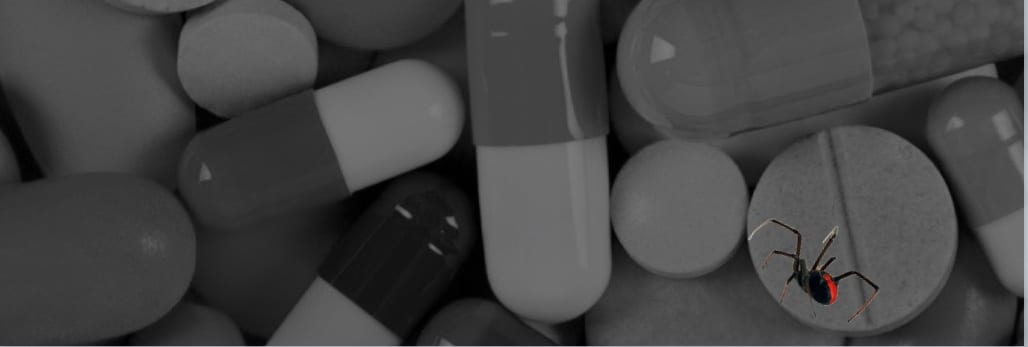Toxidrome Challenge
aka Toxicology Conundrum 025
Think you’re ready for the toxidrome challenge? You’re about to find out…
How this works
The toxidromes included are those most relevant to the differential diagnosis of serotonin toxicity (see Toxicology Conundrum #024). For each toxidrome see if you can describe the classic findings for each of the clinical features listed below – click on the link to show/hide the answer.
Toxidrome challenge
Q1. What history of drug exposure is present?
Serotonin toxicity
- 5HT2A or 5HT1A serotonin receptor agonists e.g. citalopram, ecstasy, tramadol, lithium
Neuroleptic malignant syndrome
- Dopamine antagonists e.g haloperidol, thioridazine
Anticholinergic syndrome
- Anticholinergic agents e.g. hyoscine, scopolamine, doxylamine
Malignant hyperthermia
- Inhalational anesthetics, suxamethonium
Q2. What is the usual cadence of the toxidrome?
Serotonin toxicity
- <12h
Neuroleptic malignant syndrome
- days
Anticholinergic syndrome
- <12h
Malignant hyperthermia
- minutes-24h
Q3. What changes in vital signs are expected?
Serotonin toxicity
- increased T, P, R, BP
Neuroleptic malignant syndrome
- increased T, P, R, BP
Anticholinergic syndrome
- increased T, P, R, BP
Malignant hyperthermia
- increased T, P, R, BP (notice the recurring theme?)
Q4. What are the classic pupil findings?
Serotonin toxicity
- mydriasis
Neuroleptic malignant syndrome
- mydriasis or normal
Anticholinergic syndrome
- mydriasis
Malignant hyperthermia
- normal
Q5. What skin findings are classically described?
Serotonin toxicity
- sweaty
Neuroleptic malignant syndrome
- sweaty and pallor
Anticholinergic syndrome
- hot, red and dry
Malignant hyperthermia
- sweaty and mottled
Q6. Are bowel sounds normal, decreased, absent or hyperactive?
Serotonin toxicity
- hyperactive
Neuroleptic malignant syndrome
- normal
Anticholinergic syndrome
- decreased or absent
Malignant hyperthermia
- decreased
Q7. What are the typical alterations in neuromuscular tone?
Serotonin toxicity
- increased, especially lower limbs
Neuroleptic malignant syndrome
- lead-pipe rigidity
Anticholinergic syndrome
- normal
Malignant hyperthermia
- generalised rigidity
Q8. What are the classic changes in deep tendon reflexes?
Serotonin toxicity
- hyperreflexia and clonus
Neuroleptic malignant syndrome
- bradyreflexia
Anticholinergic syndrome
- normal
Malignant hyperthermia
- hyporeflexia
Q9. What mental status changes are typically found?
Serotonin toxicity
- agitation progresses to coma
Neuroleptic malignant syndrome
- mutism, staring, bradykinesia, coma
Anticholinergic syndrome
- agitated delirium
Malignant hyperthermia
- agitation
LITFL Toxicology Challenges
- Toxidrome Challenge
- ‘Sniff a poison’ challenge
- Snakebite Envenoming Challenge
- The Antidote Challenge

CLINICAL CASES
Toxicology Conundrum
Chris is an Intensivist and ECMO specialist at The Alfred ICU, where he is Deputy Director (Education). He is a Clinical Adjunct Associate Professor at Monash University, the Lead for the Clinician Educator Incubator programme, and a CICM First Part Examiner.
He is an internationally recognised Clinician Educator with a passion for helping clinicians learn and for improving the clinical performance of individuals and collectives. He was one of the founders of the FOAM movement (Free Open-Access Medical education) has been recognised for his contributions to education with awards from ANZICS, ANZAHPE, and ACEM.
His one great achievement is being the father of three amazing children.
On Bluesky, he is @precordialthump.bsky.social and on the site that Elon has screwed up, he is @precordialthump.
| INTENSIVE | RAGE | Resuscitology | SMACC

Thank you LITFL team for all you do. Invaluable in the pre-FEx written revision/cram…
Perhaps worthwhile specifying labile BP for NMS in the vitals question.